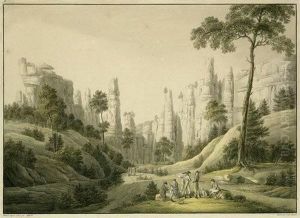Johann Friedrich Bruder Paintings
Johann Friedrich Bruder was a German painter and illustrator, born on October 10, 1800, in Stuttgart, Germany. His early life was marked by his education at the Stuttgart Art School, where he honed his artistic talents. Bruder's work primarily focused on landscapes, portraits, and historical scenes. He became known for his detailed and realistic style, which was in line with the artistic trends of the 19th century.
Bruder's career developed during a time of significant change in the art world. The 19th century saw the rise of Romanticism, which emphasized emotion and individualism, a reaction to the Industrial Revolution and the aristocratic social and political norms of the Age of Enlightenment. As a contemporary of this movement, Bruder's works occasionally reflected the Romantic interest in nature and the sublime.
Throughout his life, Johann Friedrich Bruder remained active in the German art scene. He participated in various exhibitions and gained a reputation for his meticulous approach to painting. Despite the lack of extensive documentation on his personal life, his artistic contribution to the German art history has been acknowledged by art historians.
Bruder passed away on December 22, 1893, in his hometown of Stuttgart. His death marked the end of a long and productive career. Although he may not be as widely recognized as some of his contemporaries, Bruder's work remains a valuable part of the study of German art from the 19th century, offering insights into the styles and techniques that characterized this period.
